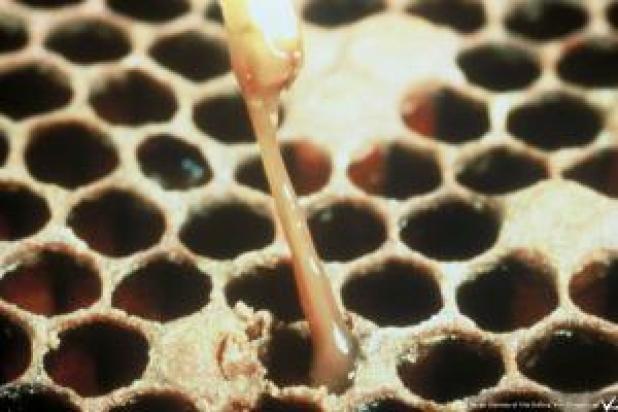
Beehive Buzz: Purple Larvae Keith Hawkins, LSU AgCenter Area Horticulture Agent (AHA)
One Friday in April, Mr. Mark Earl, Louisiana State Apiarist, called AHA about a possible case of American Foulbrood (AFB), a bacterial disease. Neither Earl nor AHA had personally witnessed a hive infected with AFB. Both people discussed the “rope” test for AFB. The Texas Apiary Inspection Service (TAIS) described the “rope” test, “One characteristic of AFB is the “ropy” condition of the infected bee that can be tested by inserting a twig or match into the affected cell, swirling the larvae around and drawing the dissolved larvae out of the cell. The dead larvae will adhere to the cell and can be stretched to at least 2 cm. After a month, the desiccating larvae will dry out completely, leaving a brittle, black scale attached to the bottom of the cell that is difficult to remove.”
Later, Earl sent images from the hive with dead bees for review. AHA isolated some pink/purple cells from one of the images.
AHA shared the image of the colored cells to beekeepers on the “beemail” list and posted the image to beekeeping pages on Facebook. Beekeepers responded with their theories for which AHA is grateful.
Ms. Amy Weeks, a Master Beekeeper in NE Louisiana, thought the cause was “possibly summer titi blooms.” She also referred to the Bee Informed Partnership, www.beeinformed.org , about this mystery.
Katie Lee, an entomologist with the University of Minnesota, observed purple brood in southern California and blogged on the Bee Informed webpage, “We came across purple brood – something I had never seen before. The larvae had a bright purple hue to them along their gut line. It was quite pretty. After some research, it seems that the most likely cause for purple brood is nectar from the plant Cyrilla racemiflora (common names are southern leatherwood or summer titi). It is poisonous to the brood, so beekeepers either must move their colonies away or take the loss.”
Dr. Jeff Skinner, Apiculture Specialist at the University of Tennessee, wrote this narrative about the titi link to colored brood, “In 1932, [Dr.] Burnside discovered titi to be the cause of poisonings of half the bee colonies in Florida that year. He named the malady, ‘purple brood,’ because affected larvae appeared blue or purple. Burnside reported that purple brood comes on suddenly and all the colonies in the affected area develop symptoms at the same time. Purple brood has been found throughout the southeast, linked to the presence of summer titi and is still considered a serious problem…”
According to the US Geological Survey, summer titi is a native plant of Louisiana in twelve parishes of Louisiana and in other southeastern states. It is also known as swamp titi, swamp cyrilla, leatherwood, palo Colorado, or black titi. It prefers to grow in wet area such as swamps, stream banks and other wetland sites. This plant tends to bloom from May to June.
However, the spring season of 2024 seems to be about three weeks early so summer titi may have been in bloom when Earl observed the colored larvae in April. At this writing, the nectar from swamp titi seems to be a reasonable theory for the issues that Earl reported.
For beekeepers who want to identify swamp titi, the US Geological Survey has an image of the flower online, and it is added to this blog post.
Here is a final note to this story. Earl shared with AHA that the beekeeper with the affected hive destroyed the hive in an abundance of caution because he suspected AFB.
If you want to contact Beehive Buzz, please send your questions and pictures to Keith Hawkins, Area Horticulture Agent (AHA), 337-463-7006 or khawkins@agcenter.lsu.edu. Also, you can be on the “beemail” email list by emailing your request to the address above.
“This work has been supported, in part, by the USDA National Institute of Food and Agriculture, Renewable Resources Extension Act Award, Accession Number 1011417.”
